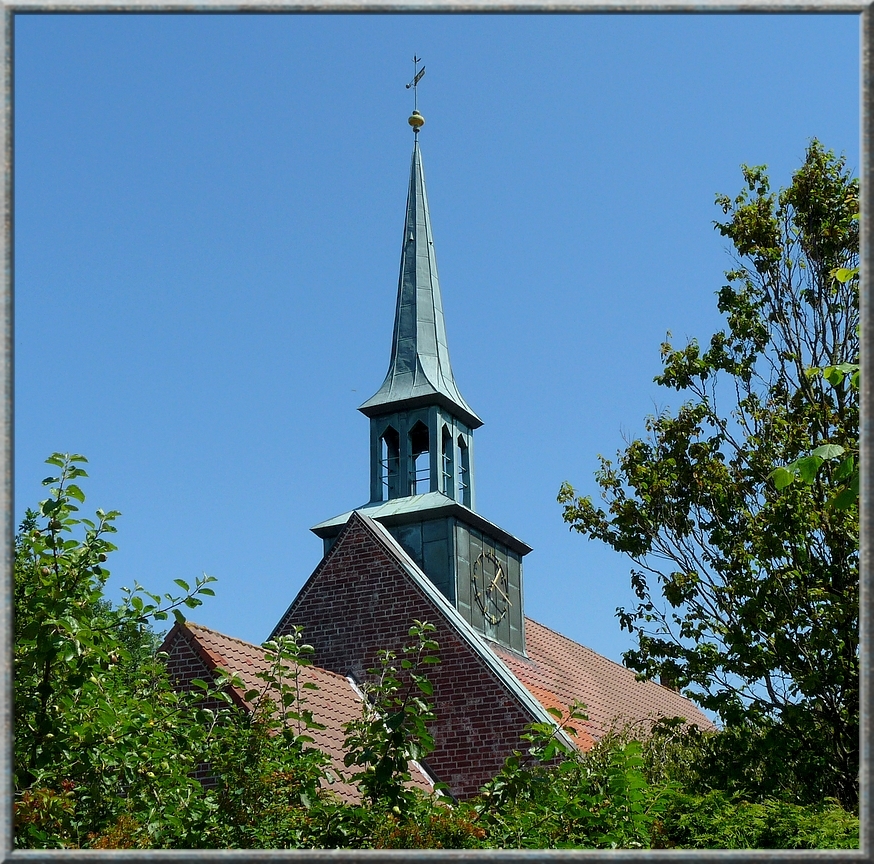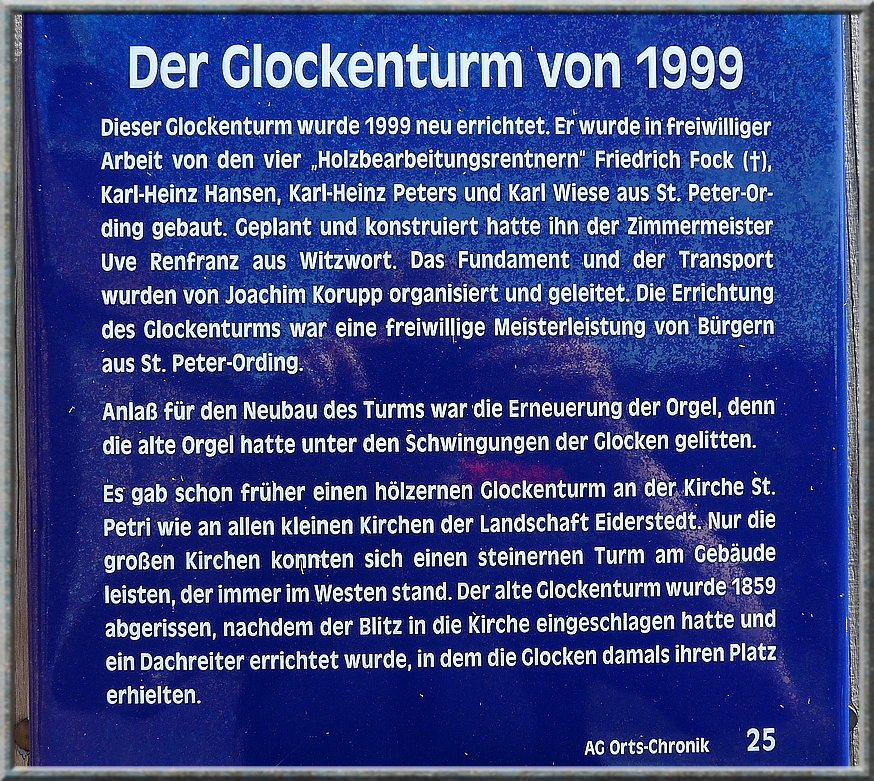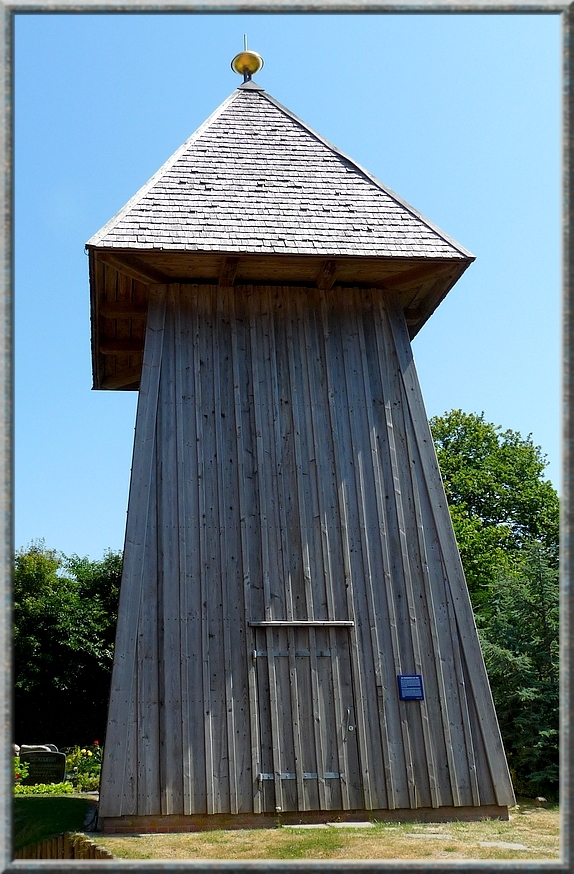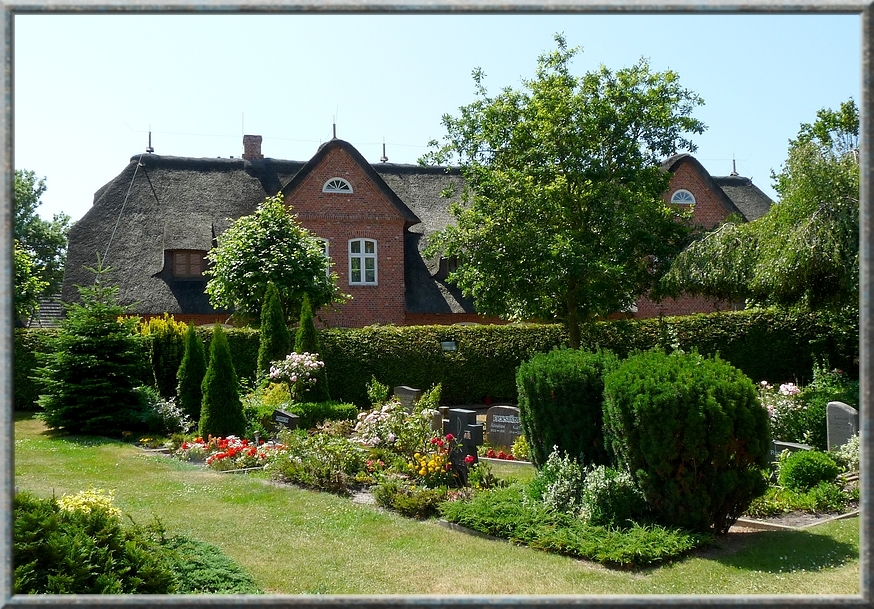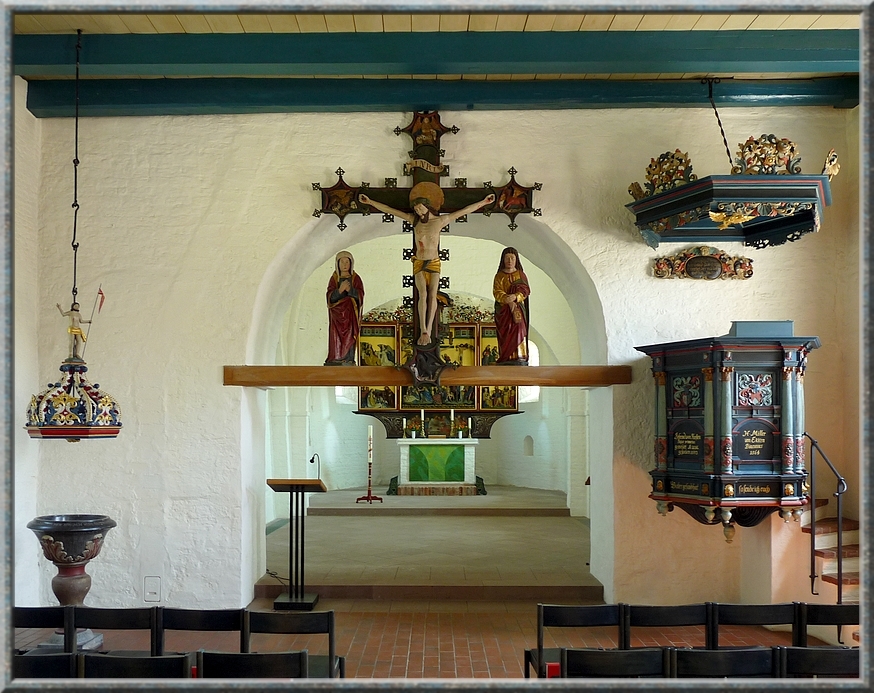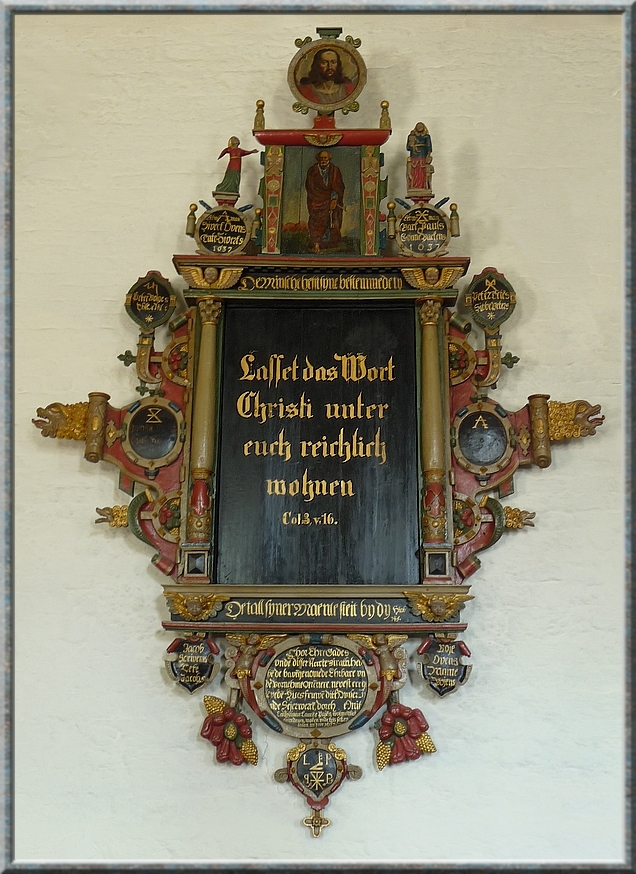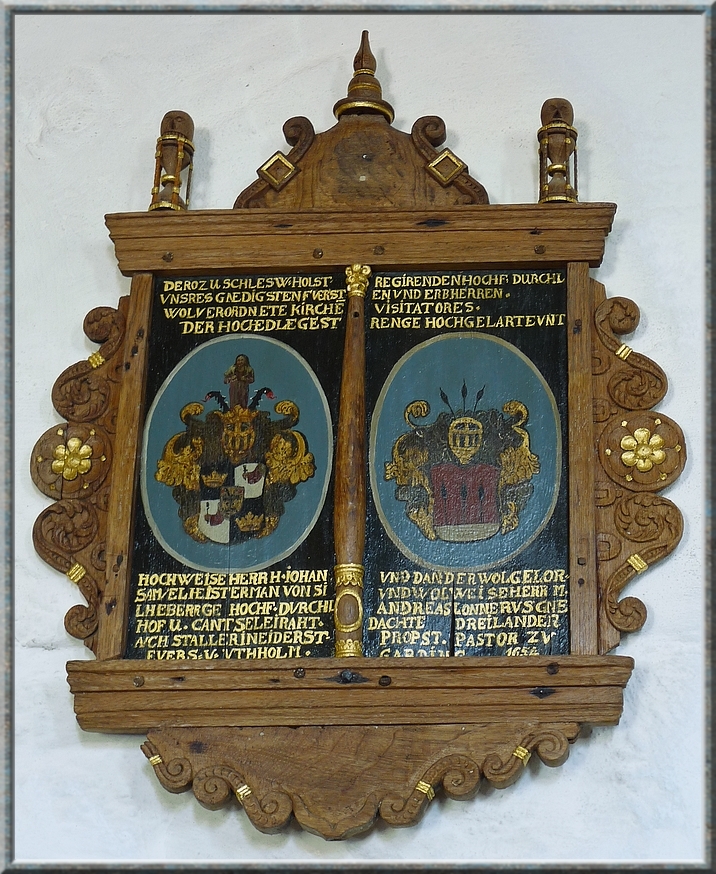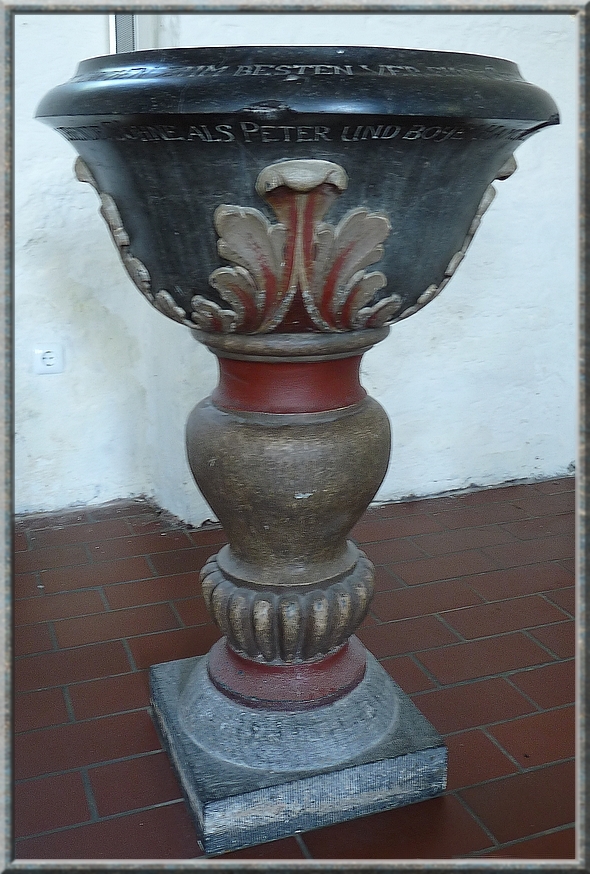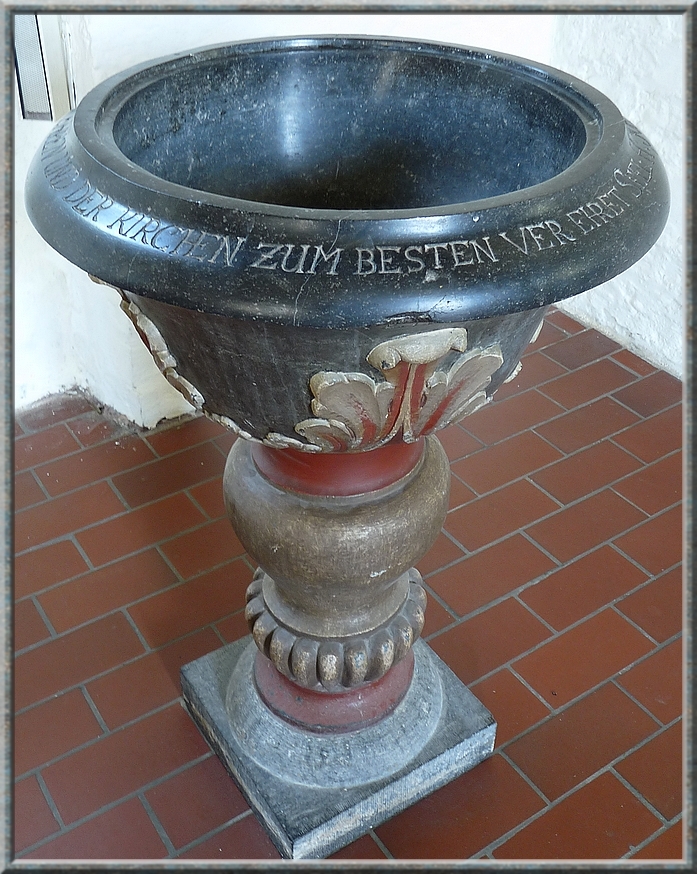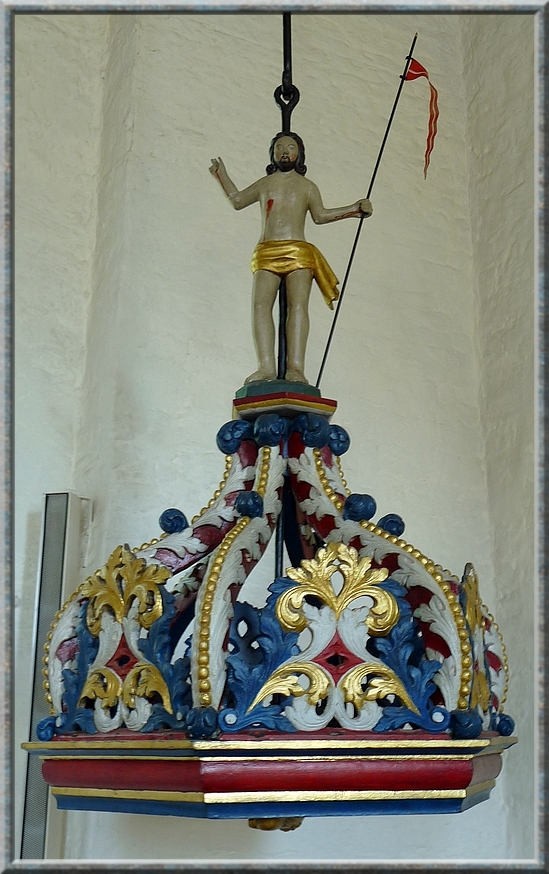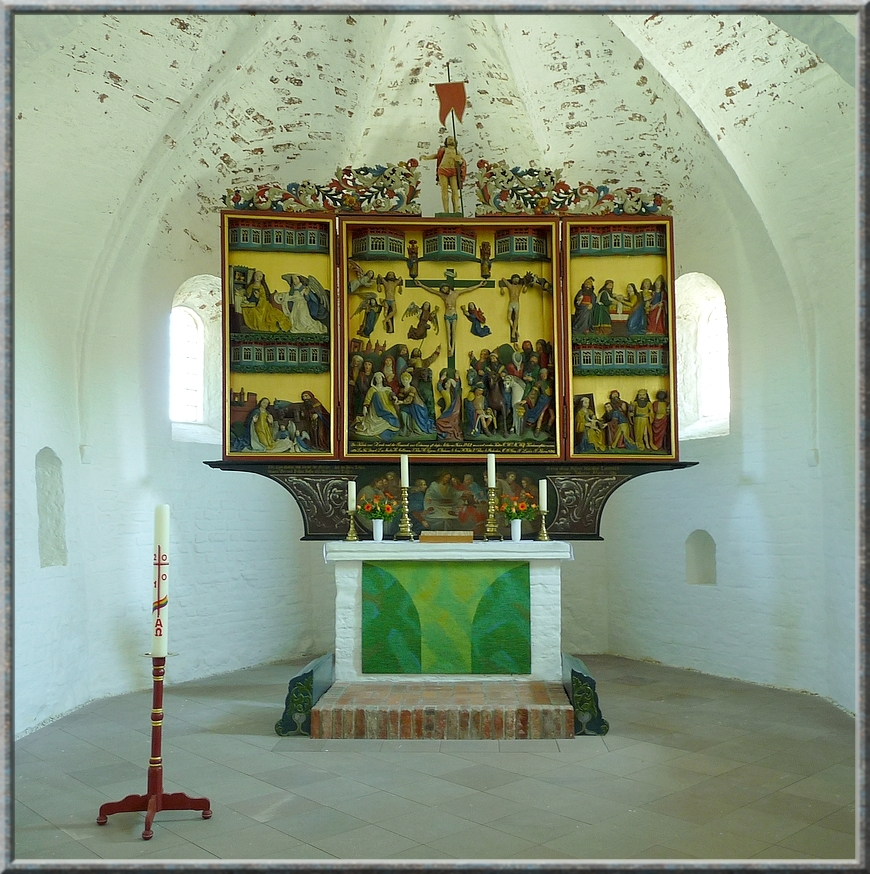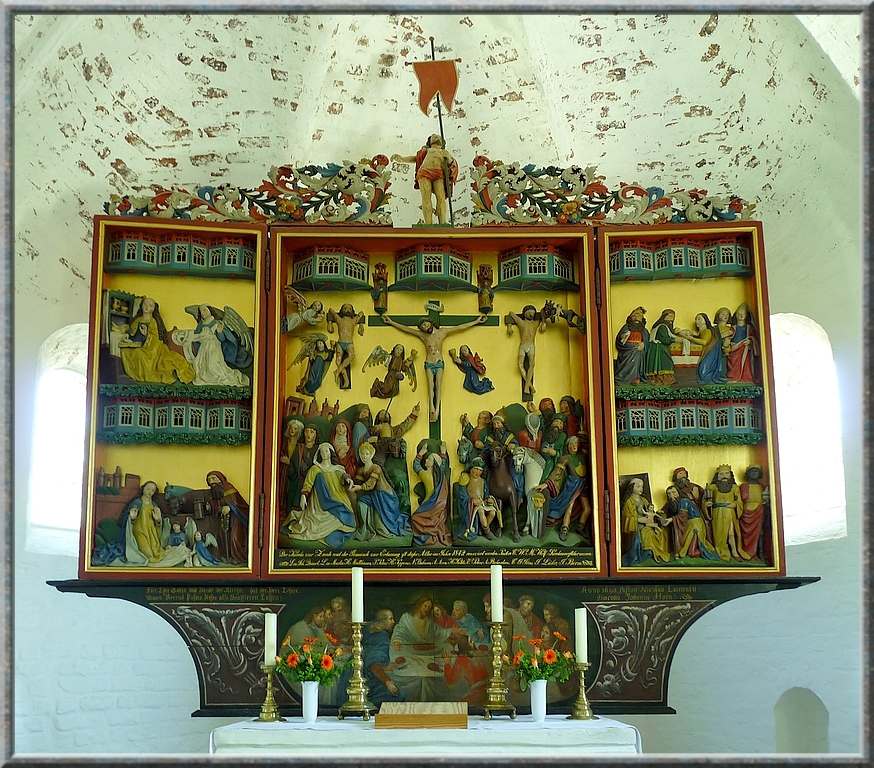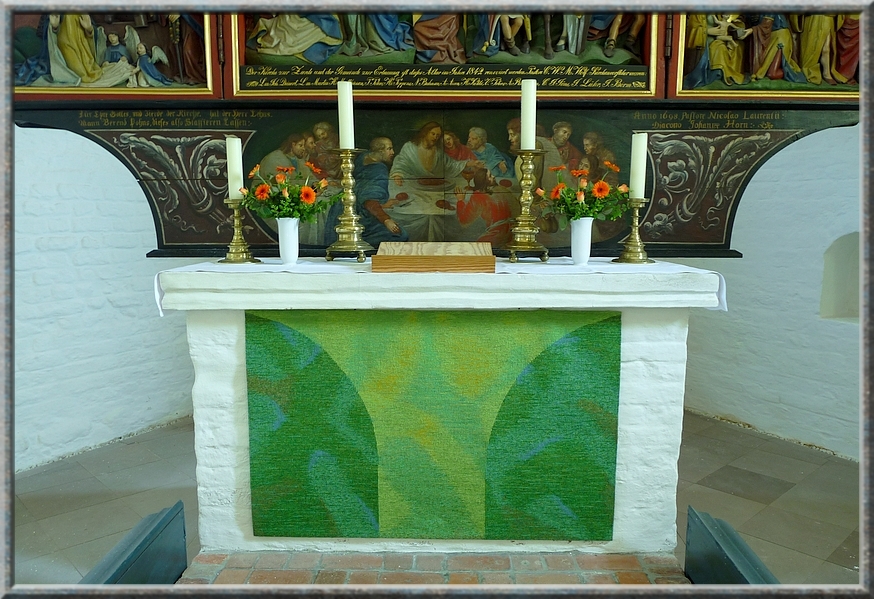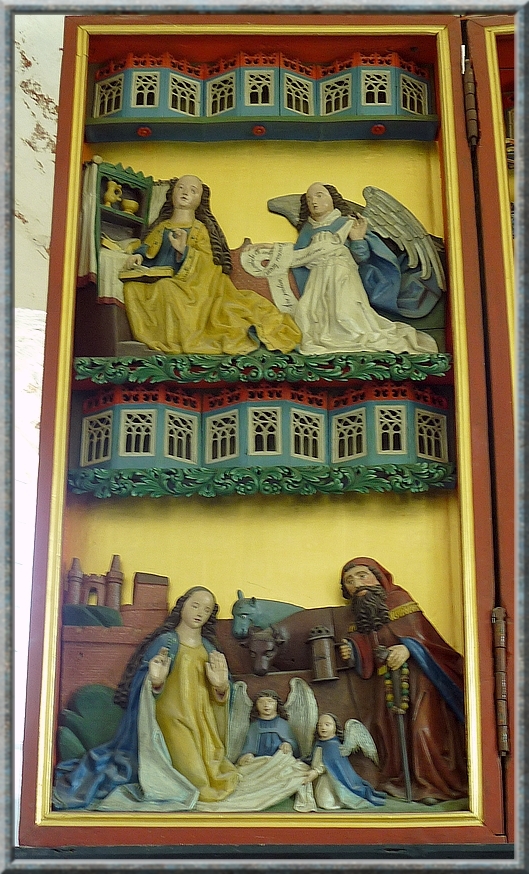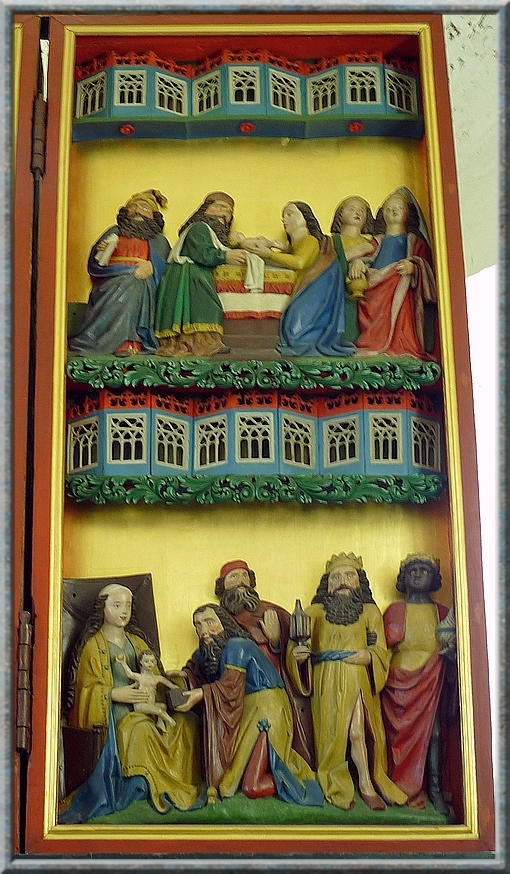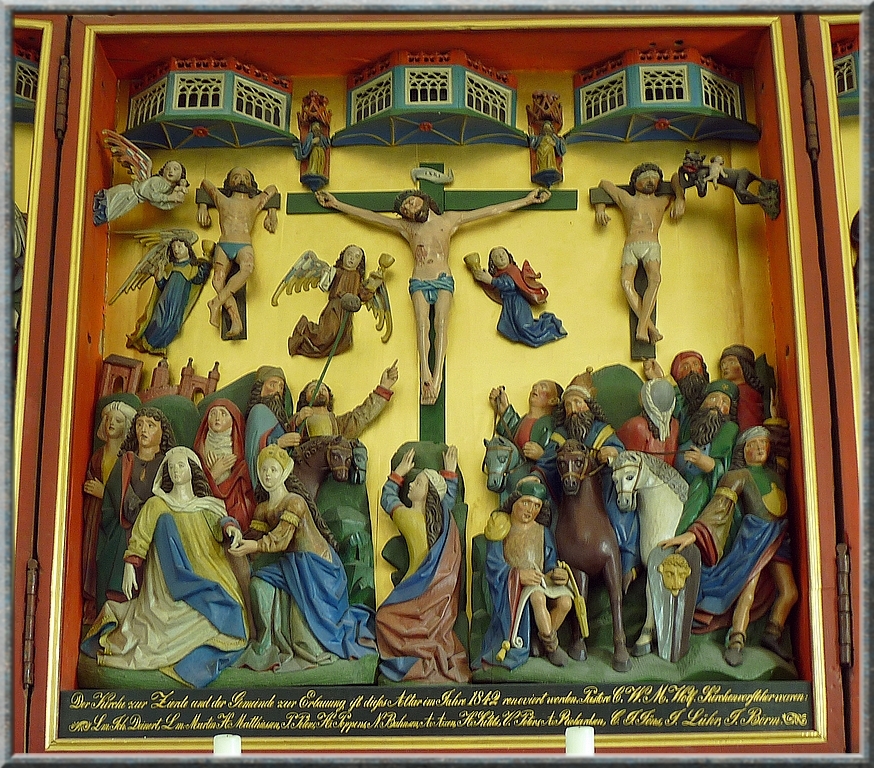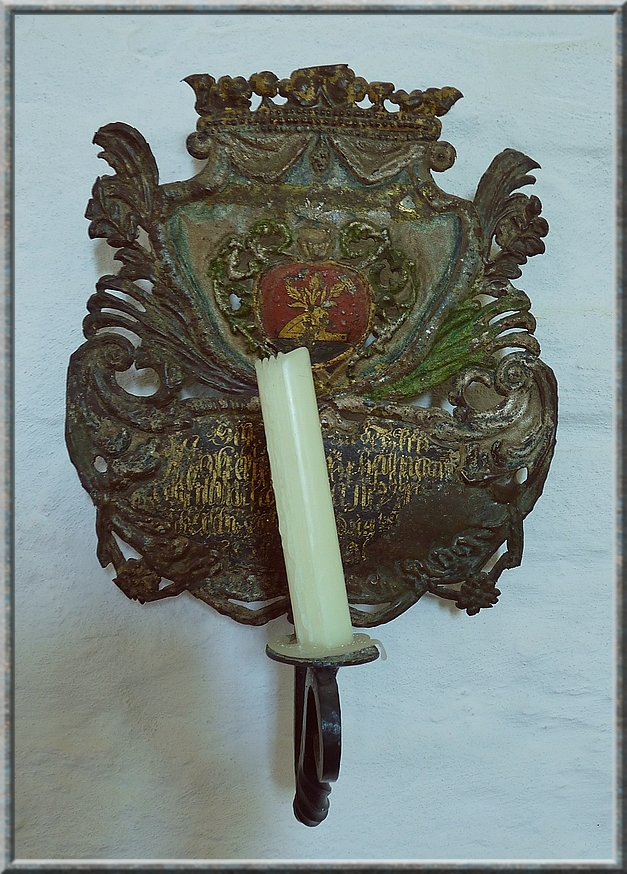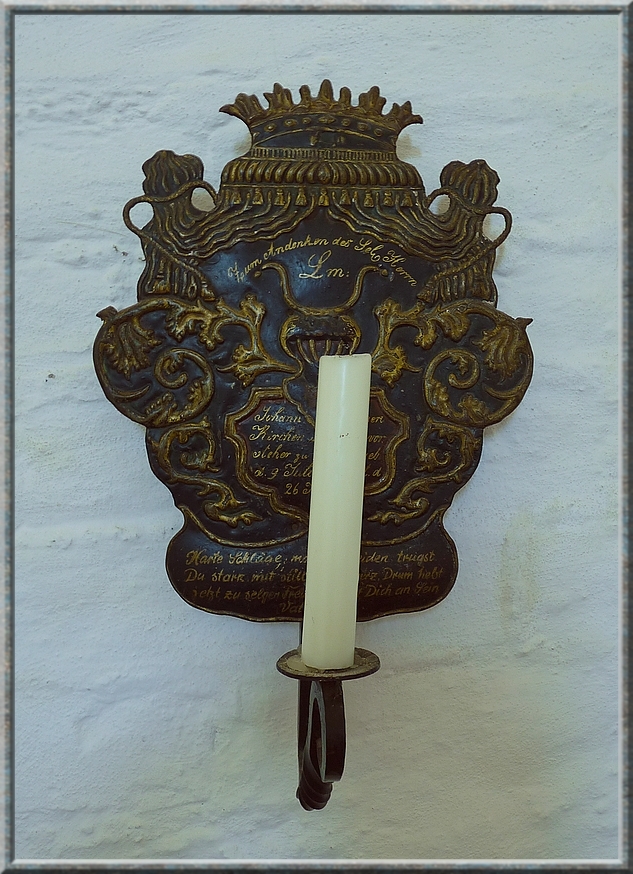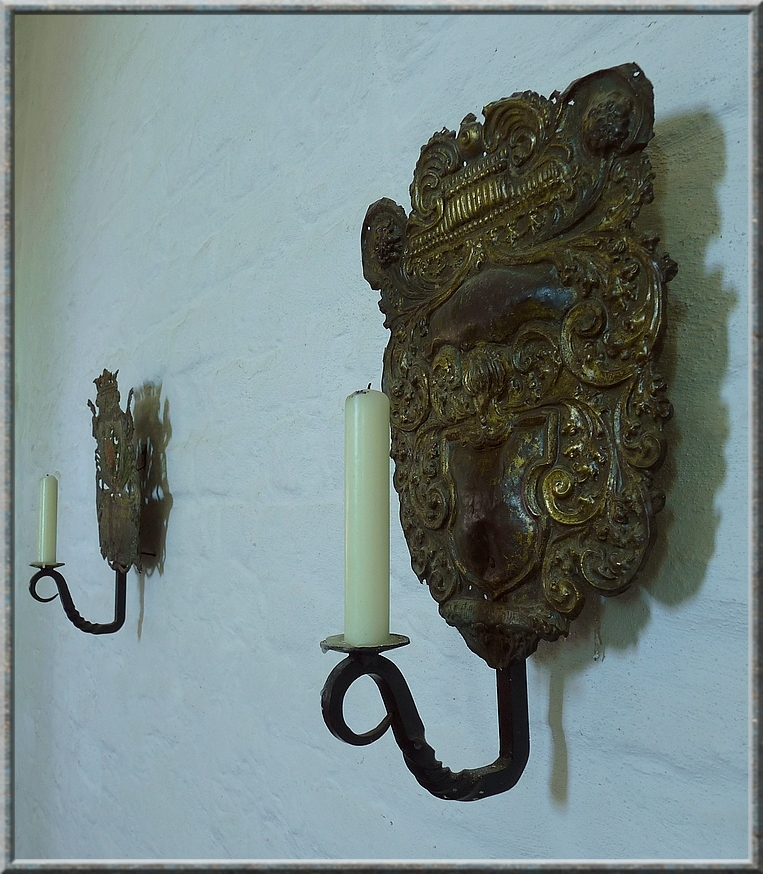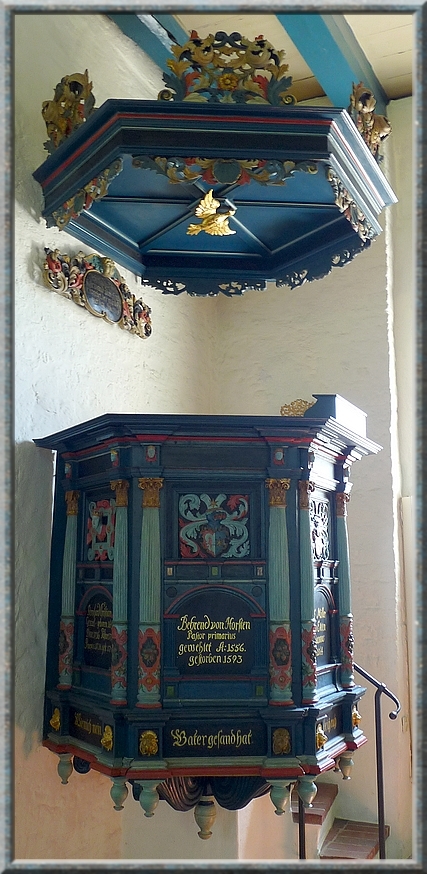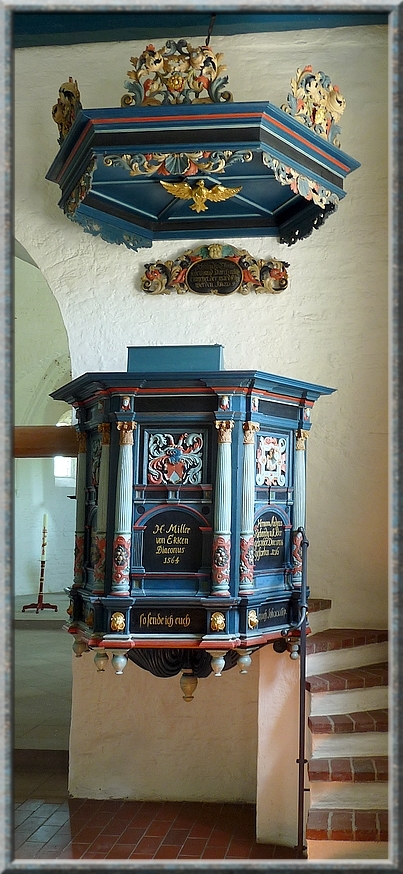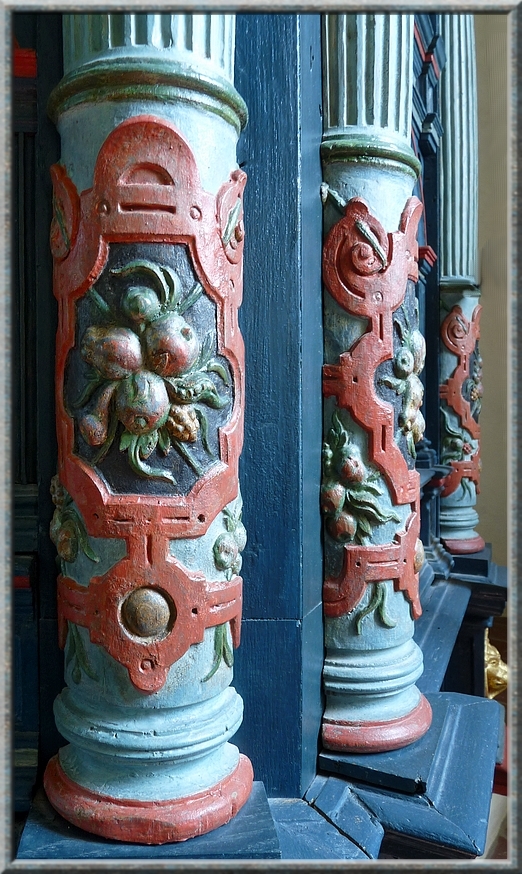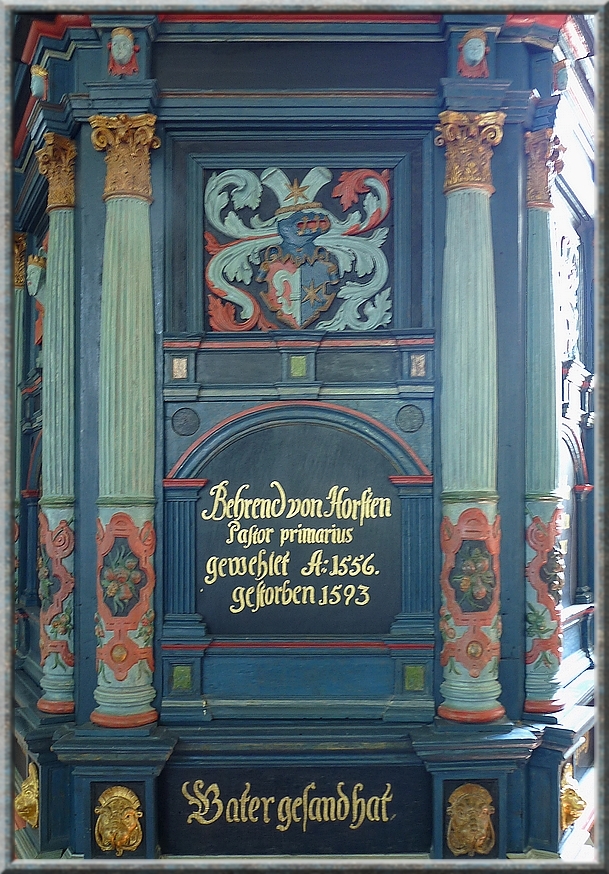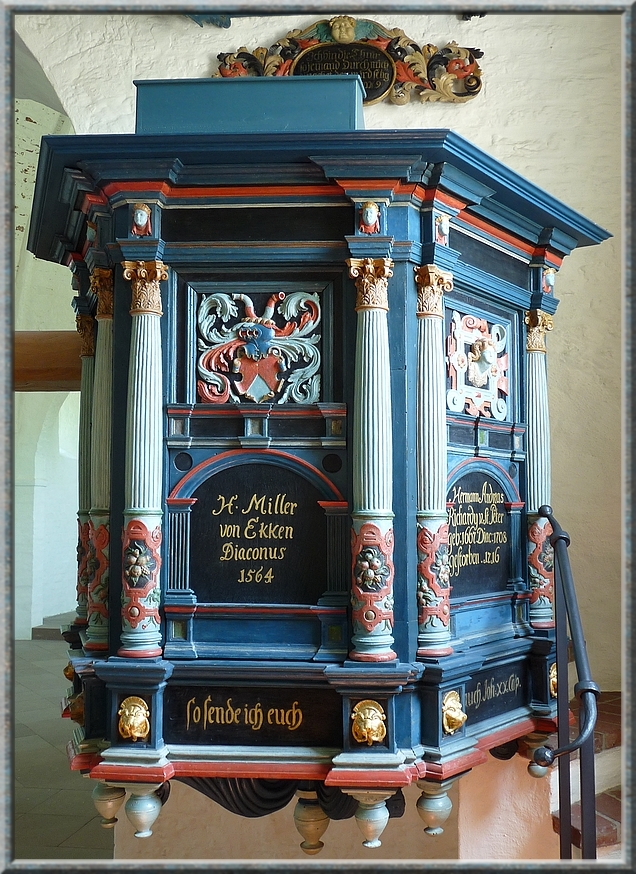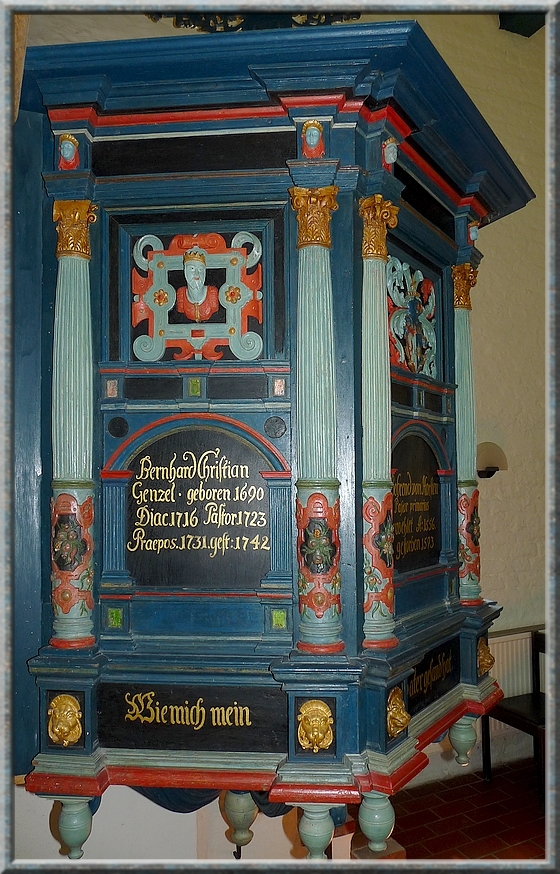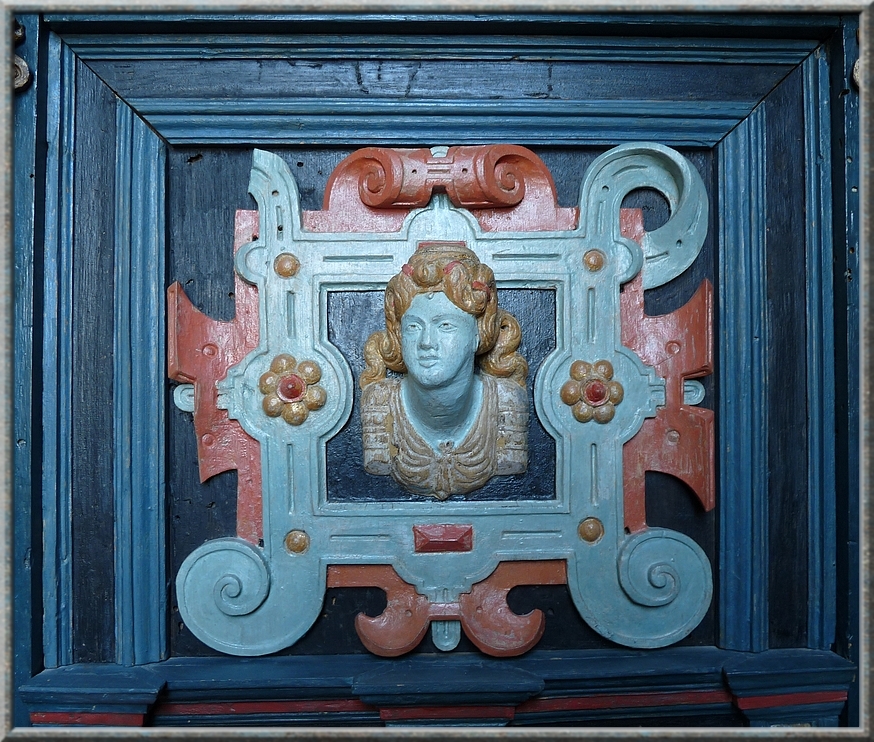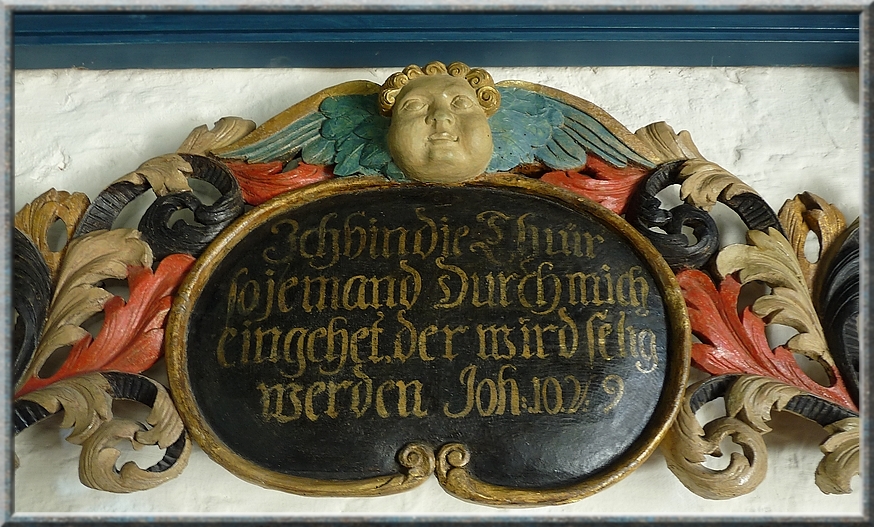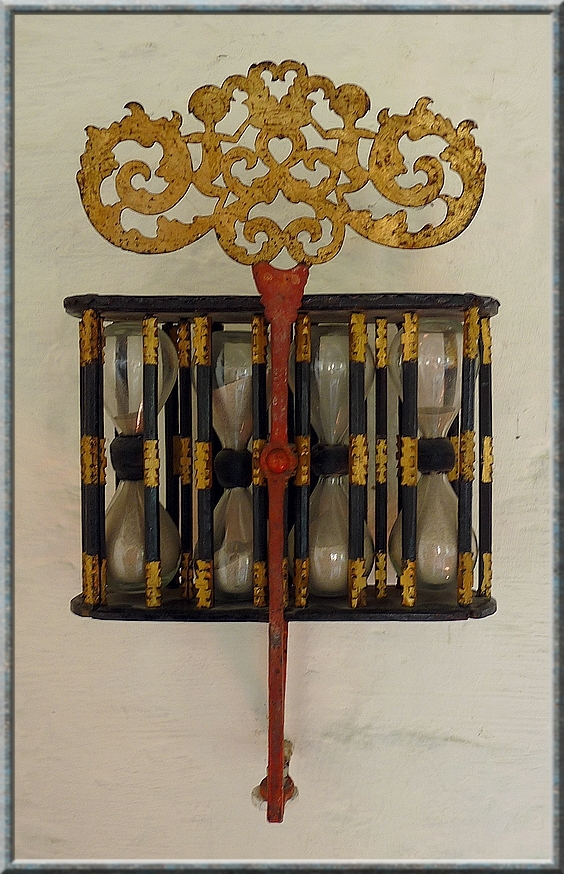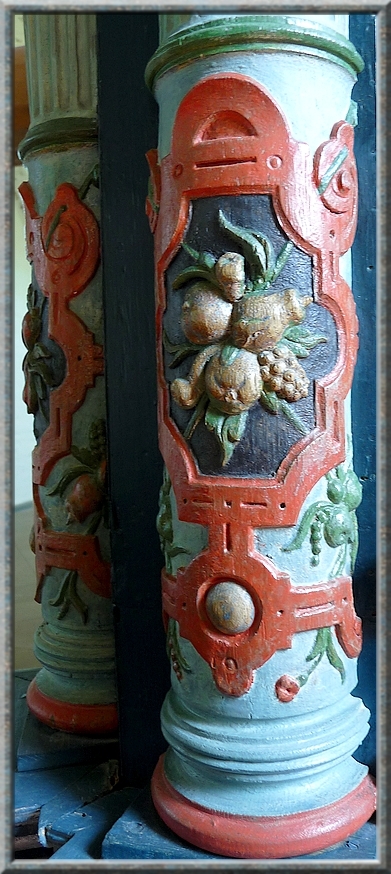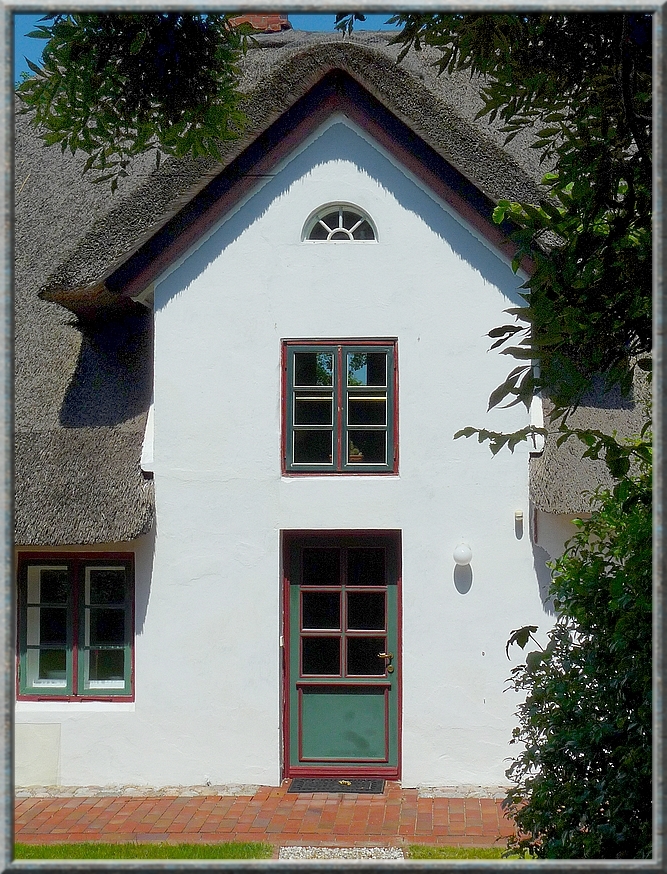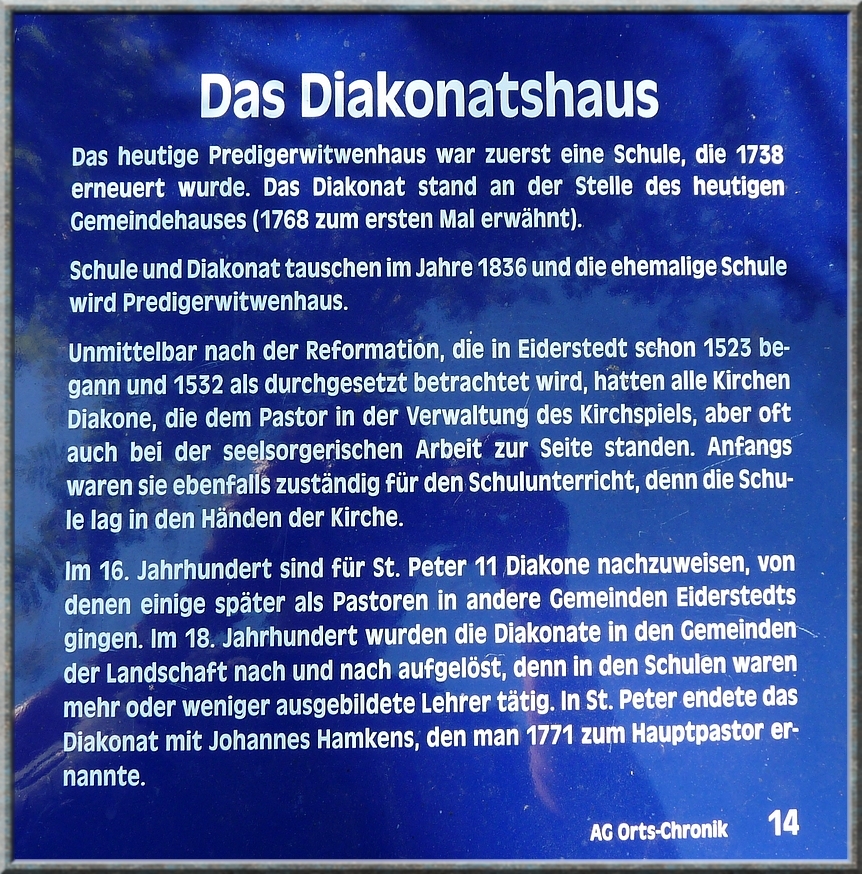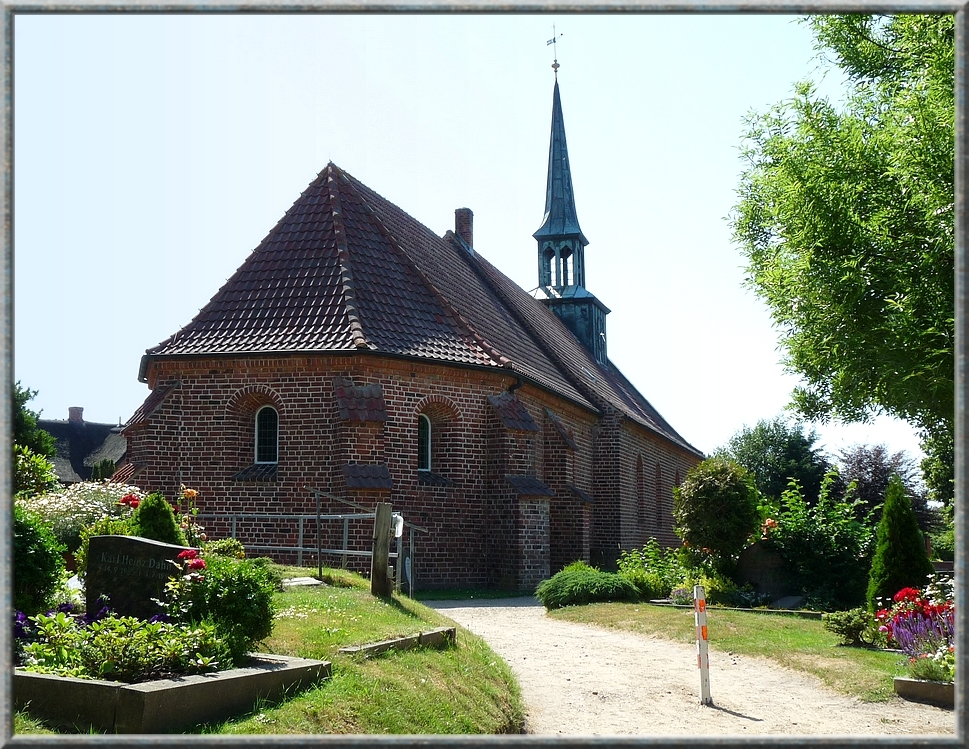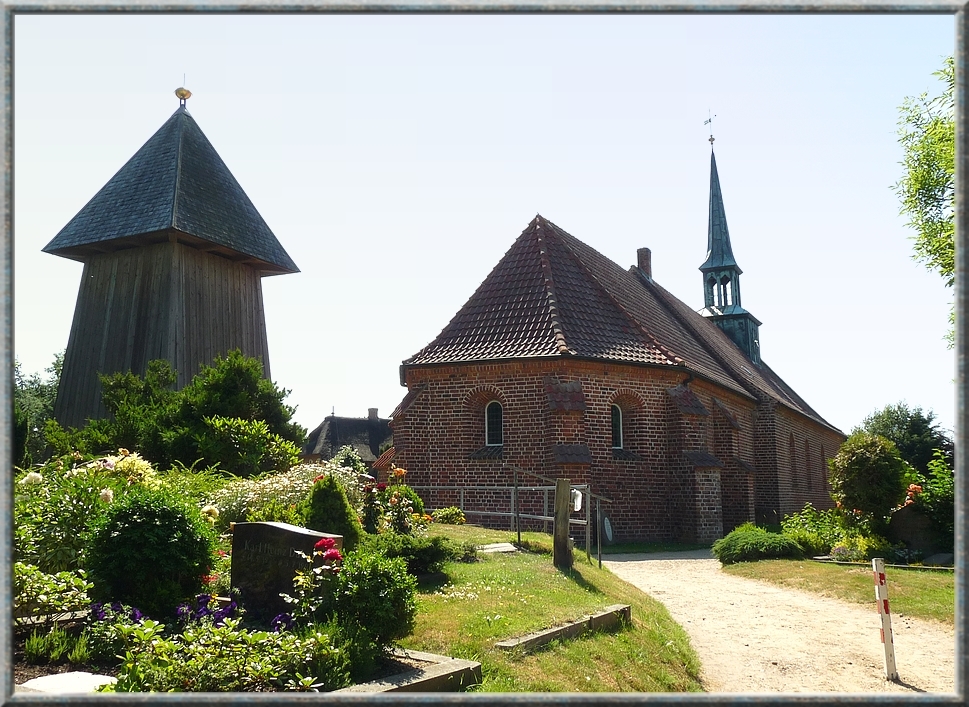St. Peter-Ording, 10 July 2010
According to two different internet sources the church St. Peter was founded in the 11th or 12th century. At that time the town around the church was called Ulstrup. The church was first named in a document in 1373, when the aldermen offered free escort and protection to a group of merchants from Hamburg. In 1445 a spectacular court case was held on the thing place infront of the church. Through that the church got widely known. As a result of this and also due to considerable landlosses because of sanddrifts the village Ulstrup changed its name to St. Peter.
St. Peter is a little church with some beautiful craftwork in its interior.
Sources concerning the churches history:
http://www.ag-ortschronik.de/3d5171d4-13ef-47e6-bf74-2b28f6b0bd7b.html?t=1393636466128
http://de.wikipedia.org/wiki/Sankt_Peter-Ording
http://www.tz-eiderstedt.de/kunst-kultur/kirchen/achteihn-kirchen/st-peter-ording-dorf-st-peter.html
http://www.st-peter-ording.de/kirchen.html
The wooden clock tower has been built in 1999 by four voluteering woodcraft pensioners from St. Peter-Ording: Friedrich Fock (+), Karl-Heinz Hansen, Karl-Heinz Peters and Karl Wiese. The carpenter Uve Renfranz of Witzwort was responsible for the planning and construction. The foundation and the transport was organized and led by Jochim Korupp. The raising of the clock tower was a volunteer masterstroke of citizens of St. Peter-Ording.
Why a new external clock tower? The organ had to be renewed as the old organ had suffered from the swinging of the bells.
In former times the church of St. Petri had already had a wooden church tower similar to all the little churches in the landskape Eiderstedt. Only big churches could afford a stone tower connected to the westside of buildings. After a lightning stroke hit the roof of St. Petri, the roof was redesigned to include a ridge turret in which the bells found their new home. The old clock tower had afterwards been demolished in 1859.
The Deaconry House
This building is nowadays the house of the preacher's widow. Formely this was a school which was first mentioned in 1738. The deaconry was then situated at place where we nowadays find the parish hall. The deaconry was first mentioned in 1768.
The school and the deaconry changed buildings in 1836 and the former school became the preacher's widow's home.
Immediately after the reformation, which started on Eiderstedt in 1523 and was deemed enforced by 1532, all churches had deacons which supported the parsons concerning the administration of the parish but often also by taking part in the pastoral care. At the beginning they were also responsible for the teaching as the school was being supervised by the church.
St. Peter had 11 deacons during the 16th century. Some of them became priests in other congregations of Eiderstedt. During the 18th century the deaconries of Eiderstedt had been suspended one by one as the schools by then were provided with more or less educated teachers. The last deacon of St. Peter was Johannes Hamkes, who became appointed as senior parson in 1771.
